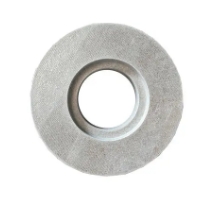- 12
- Mar
Pressing process of soft mica board
Pressing process of soft mica board
The key role of soft mica board in insulation, how to make it and how to work? Let’s talk about the various properties of mica board below. Of course, we must first introduce the production method of mica board heating.

The heating wire used in the soft mica board is to first press the heating alloy material into a thin sheet of only a few millimeters, and then use the method of corrosion or laser cutting to form it, and then use the adhesive method to stick the heating wire to the mica The substrate is formed by high-strength die-casting. The electric heating wire is characterized by high temperature and high power density. The local current of the hot wire in the corner is too large, the temperature is too high (up to 500-700 degrees), simple damage and risk of formation. Some manufacturers have burned the mica substrate into a black hole, and even caused a fire. risk. Our products are flat heating, uniform temperature, not easy to melt. Because the heating wire is linear heating, it is difficult to ensure the uniformity of heating. The surface temperature of the heating wire reaches 500 degrees. Therefore, the mica heating plate will bake a linear black mark on the surface of the soft mica board after a period of time. Pretty. If the external mica is exposed to this kind of high temperature for a long time, it can affect the service life of the mica base material.
The pressing process of soft mica board requires three baking and three pressing.
In the first drying and pressing, all parts of the commutator are normal, and the second drying and pressing adopts the same process as the first time, and all parts of the commutator are also normal. After the third drying and pressing, it is found that the V exposed outside the commutator Severe delamination and slippage of the ring appeared. In the subsequent manufacturing and assembly processes of the three commutators, it was found that the commutators were stratified and shifted.
Analysis of the reason: After analyzing all the commutators, it was found that delamination and displacement occurred in the middle of the V-shaped ring. At first, it was suspected that the size of a part of the commutator was out of tolerance. During the assembly of the commutator, the V-shaped ring was subjected to uneven shearing force, which caused displacement, but each part was changed. Inspect, no oversize problem was found.
After repeatedly adjusting the pressing process of the V-shaped ring, the gelation time and process of the soft mica board material were tested, and methods such as prolonging the baking time and increasing the glue content were adopted. The pressing process was adopted to make the glue in the V-ring Fully cured. However, the V-shaped ring pressed according to this process still shows delamination and slippage when installed in the commutator. Further calculation of the force per unit area on the 30° surface of the motor commutator found that it reached 615kN, but this force was not considered in the previous structural design. After analyzing and calculating the 30° force of the commutator of other types of DC motors, it is found that they are all below 5OOkN.
